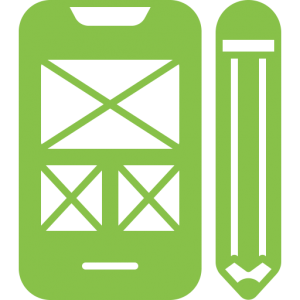
Introduction
Using a website or app with a good user experience feels very easy but making one is not. Repeated usability testing is conducted to ensure that the user experience is flawless. Bugs and usability issues are detected through that testing, and amendments are made accordingly.
What is a prototype? It is an early and incomplete iteration of a design or interface. A prototype is used as a guide for UX designers to follow, as they build out a website or mobile app. Prototyping is an important step in the UX design process. It is always better to make prototypes and test them before launching the final product.
While prototyping and early stage usability testing can be a tedious and repetitive process, there are many benefits to including these steps in the design process. You can build a website or app without the fear of having any bugs in the user interface. As well, you can get an early look at the way users navigate and interact with the interface. This can help UX designers build out the app or website in a way that is intuitive to users in real life.
Key stages of prototyping
The key stages of the prototyping process are:
- Paper sketches: start with simple, hand-drawn iterations of the design and user interface. Determine a basic layout and even color scheme for the UX design.
- Wireframes: build out a slightly more developed version of the sketch, denoting placeholders for various elements to be included in the final user interface. This is also a great stage to start conducting a form of user testing to get some insight on how users feel about the UX.
- Prototyping: at this stage, take wireframes and create a more fully-fleshed out design or interface. You can create low-fidelity prototypes with limited functionality, or you can go for high-fidelity prototypes with some limited functions. This is definitely a stage to conduct usability testing, in order to identify the highs and lows of the user experience prior to putting the design into production.
- Final product/design: this is where all the feedback from various stages are put into practice. Take your prototype and build it into a fully functioning design.
All of the stages mentioned above should be put through rigorous rounds of usability testing. Doing so will allow you to get a final product with a good chance of being flawless.
Sign up for our FREE trial that includes 5 user testing videos with full features!
Types of prototyping

There are three main types of prototyping:
- Paper prototyping is ideal if you don’t have immediate access to tools and software. It’s also a great way to start the process of prototyping. You can use pen and paper to draw sketches of different aspects of your website or app’s user interface. There will obviously be no functionality to this level of prototyping. However, it can be a great way to show the anticipated user journey.
- Digital prototyping is done on the digital space, using design tools and apps. Because these tools often make prototyping easier and simpler, you can usually create a more high-fidelity version of the prototype. You can create a more functional interface that users can interact with more realistically. Obviously, you can present more of the user experience flow to your design team and discuss user feedback with them thoroughly. Some good tools for this are Figma, Sketch, JustInMind, and InVision.
- Coded prototyping is a more complex form of prototyping. It requires developers with reasonable skills to execute the tasks. This will lead to a very high-fidelity prototype. The benefit of this is being able to get a strong read on the user’s view of the UX through prototype usability testing. Because the design will be fairly close to complete and fully functional, you can accurately follow the user’s journey navigating the interface. However, because this requires actual coding, the process can be long and requires a lot of effort.
Benefits of prototype usability testing
Prototype usability testing should be performed early to benefit in the long run. We will discuss some of the benefits of prototype usability testing that can help your app or website once it is developed successfully:
- Early-stage prototype usability testing reduces the risks of bugs and usability issues in the UX design itself.
- Early-stage prototype usability testing saves two of the most valuable things, time and money.
- Early-stage prototype usability testing allows you to identify the mistakes in the usability of the website or app before it goes live.
- Early-stage prototype usability testing enables UX researchers to conduct more rounds of testing as the UX design evolves.
- Early-stage prototype usability testing is better than conducting usability testing after bugs and pain points have already been identified. If you have launched a product, testing it after the fact doesn’t make up for the time and money already wasted.
Remember, some things are best completed early. Prototype usability testing is one of those things.
Conclusion
Prototyping can be a tiring process, but it is essential. There are different phases and types of prototyping that you can incorporate in the UX design process. Early-stage prototype usability testing has many benefits, including saving time and money. It is better to perform prototype usability testing before launching the final app or website.
Sign up for our FREE trial that includes 5 user testing videos with full features!





